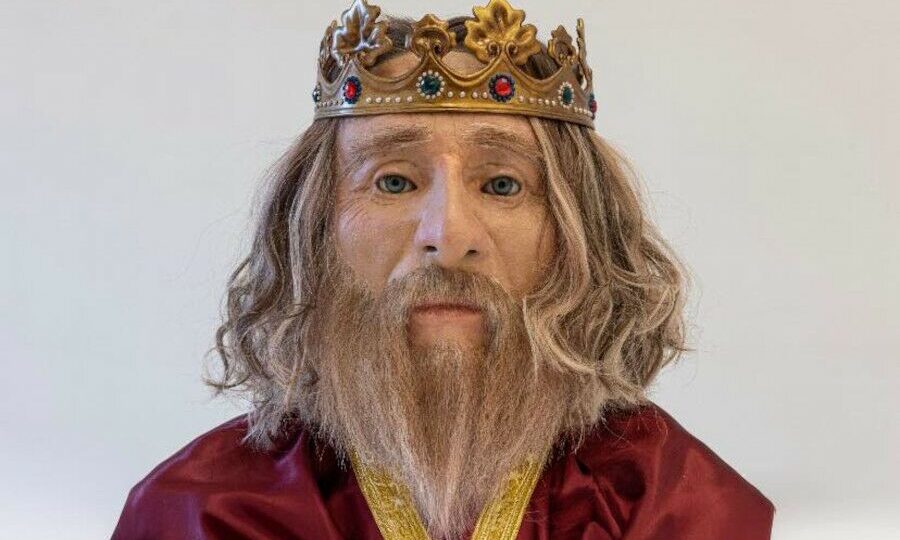Big nose, blue eyes and blond hair: King D. Dinis’s face revealed 700 years after his death
Seven centuries after his death, the face of King D. Dinis, the sixth king of Portugal, was revealed after extensive 3D facial reconstruction work. The facial analysis was carried out at the Liverpool John Moores University FaceLab, under the scientific coordination of anthropologist Eugénia Cunha, from the University of Coimbra.
The project began in 2016 with the restoration of D. Dinis’s tomb. However, the decisive step of opening the tomb, which led to the analysis of his DNA, was only taken in 2023.
D. Dinis’s face, at the time of his death, revealed an elderly man 64 years of age.
“What we have here was done with solid scientific data, from a very well preserved skeleton with all facial bones preserved”, explains Eugénia Cunha.
Cunha also says that the king would have “an elongated nose” and “a slightly receding chin”, with “blue eyes” that “could also have a little green mixed in”.
D. Dinis would have stood “between 1.65 and 1.68 meters” the scientist also reveals, noting that she had a “population affinity 71% European”.
“He had all of his teeth at death and just a single cavity“, according to Miss Cunha, considering that he was “an adult with great survival” and “a resistant one”.
“Although there were individuals who reached advanced ages, being 63 years old 700 years ago It would be like being 90 years old or more today“, explains the scientist, noting that he would have benefited from “good nutrition” and belonging to “an elite”.
“According to historical records, the king would have been bedridden before he died, which may have led to him being thinner in the face“, she notes.
Eugénia Cunha also revealed that this is “the first scientifically proven portrait of a Portuguese king”.
“This face can be scientifically proven to be like this. It wasn’t an artist who imagined what D. Dinis would be like. It was his skull and genetics that told us what he really looked like”, highlights the anthropologist.
The scientist also explained that DNA analysis was done through root of a tooth. “Then we put the crown in place. We only destroyed the root of the tooth”, she highlights, highlighting that they were not “destroying a femur or pulling out teeth”.
D. Dinis was responsible for one of the longest reigns in Portugal’s history between the years 1279 and 1325. He was also known as the Farmer or Poet-King.
His face will be made known to the country in a traveling exhibition beginning in April 2025.


